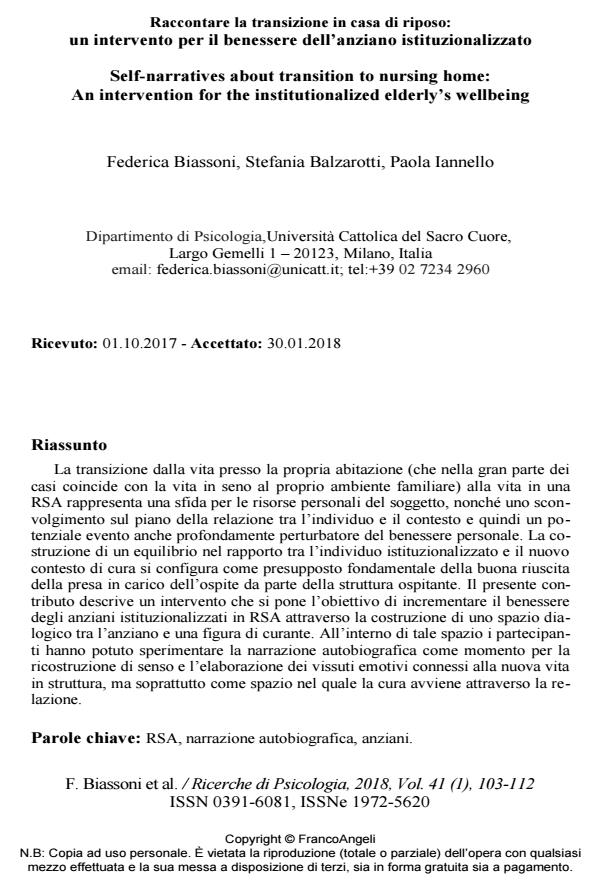Self-narratives about transition to nursing home: An intervention for the institutionalized elderly’s wellbeing
Journal title RICERCHE DI PSICOLOGIA
Author/s Federica Biassoni, Stefania Balzarotti, Paola Iannello
Publishing Year 2018 Issue 2018/1
Language Italian Pages 10 P. 103-112 File size 166 KB
DOI 10.3280/RIP2018-001008
DOI is like a bar code for intellectual property: to have more infomation
click here
Below, you can see the article first page
If you want to buy this article in PDF format, you can do it, following the instructions to buy download credits

FrancoAngeli is member of Publishers International Linking Association, Inc (PILA), a not-for-profit association which run the CrossRef service enabling links to and from online scholarly content.
Transition to nursing home represents a challenge for the individual resources and a turmoil in the relationship between the person and his/her context, threatening the personal wellbeing. Finding a balance between the institutionalized elderly and the new context is a fundamental requirement for successful taking charge. The present work describes an intervention aimed at empowering the elderly’s wellbeing in nursing home thanks to the creation of a dialogic space with a care provider. Within such a context the participants experienced self narration as a space for sense making and emotion regulation and as an opportunity for care through relationship.
Keywords: Nursing home, self-narration, elderly.
Federica Biassoni, Stefania Balzarotti, Paola Iannello, Raccontare la transizione in casa di riposo: un intervento per il benessere dell’anziano istituzionalizzato in "RICERCHE DI PSICOLOGIA " 1/2018, pp 103-112, DOI: 10.3280/RIP2018-001008